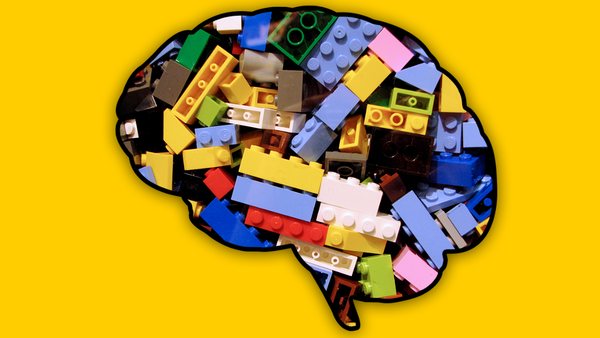Adapting to Digital Darwinism: Will AI create a permanent new class divide?
"LLMs, GenAI, predictive analytics and intelligent automation are pushing organizations to reassess who remains relevant in the digital economy."

In June 2025, Amazon issued a stark warning to its employees: adapt to artificial intelligence or risk being left behind. In a blog post sent out to all employees, Amazon CEO Andy Jassy highlighted the company’s aim to further lean into AI solutions for efficiency gains. This move would enable the company to eventually have a reduced human workforce.
The message was directed at the corporate workforce, or white-collar professionals in roles that were traditionally perceived as stable and secure. The rapid rise of large language models, predictive analytics, generative AI and intelligent automation is transforming how we work and pushing many organizations to reassess who remains relevant in the digital economy.
This marks a new chapter the concept of Digital Darwinism, a world where adaptability rapidly evolving technology waves determines survival. In this shifting landscape where human seniority and experience are quickly proving irrelevant, organizations are left with a difficult question. Is AI truly delivery sustainable value, or quietly establishing a new class divide?
Understanding Digital Darwinism
The concept of Digital Darwinism describes the phenomenon of technology change outpacing individual and organizational adaptation. The concept has existed for decades, as digital disruption has increasingly transformed the global business landscape. However, the recent burst of development and adoption of AI-based technologies had accelerated the impact of this concept significantly. Previously, the waves of digital disruption shifted industries or business models, breaking traditional assumptions and creating new opportunities for revenue in the digital economy. This current AI-led wave of disruption is impacting roles, skills and capabilities, directly impacting the people within organizations.
In my new book, Artificial Intelligence For Business, I highlight the speed of change is difficult to keep up with, and the need for upskilling, reskilling and new skilling as a strategic priority across almost every industry. In a world increasingly powered by AI, we are observing competence and seniority being reprioritized in favor of cognitive flexibility and adaptability.
To gain a deeper understanding of what is occurring today, it helps to revisit the past. In the early 1800s, the Luddites protested the introduction of mechanized looms that posed a threat to their jobs. While these textile workers were often dismissed as ‘anti-technology’, they were demanding fair treatment in a rapidly shifting economic system.
We can draw similarities to the patterns emerging in the current global business landscape. The new Luddites are white-collar professionals, who are uneasy and distrustful of AI-based technologies that can take over operational tasks, as well as strategic activities in their daily business. Their fear is rooted in the loss of control, erosion of personal identity often linked to professional roles, and a deep-rooted sense of becoming irrelevant in a system that few fully understand.
Rise of The AI Class Divide
The traditional hierarchy of value in organizations is being redefined. Those who can build, train and direct AI-based technologies will hold power, while those who remain tethered to traditional ways of working without augmenting their skills and capabilities will fall behind and be replaced.
This is the emergence of a new structural divide, and we already see contours of this new landscape as white-collar roles are gradually being automated, from data entry clerks and marketing coordinators to middle management.
As the wave of AI takes over, organizations are categorizing roles as augmented and automated, further highlighting the class divide. Augmented roles are able to rapidly adapt with AI to enhance their productivity, creativity and decision-making.
READ MORE: Amazon prepares for the "next wave" of its robotics revolution
AI will be able to replace automated roles to perform more efficiently, with fewer errors and at scale. The outcome is a workplace where value is tied closely to one’s ability to adapt and partner with intelligent machines.
Additionally, a new kind of exclusion triggered by the consequences of AI is often overlooked – digital fluency. While DEI programs often focus on race, gender, historical or cultural inequities, organizations are less equipped to manage the emerging divide between those who can work effectively with AI, and those who cannot.
To avoid creating a new privileged class in the workplace, organizations need to broaden their inclusion strategies to access AI tools, training and mentorship. Closing the digital divide will become a strategic and ethical imperative in the future of business.
Prioritizing the Human Premium
As AI increasingly encroaches on traditional cognitive work, what remains uniquely human becomes a competitive advantage, including emotional intelligence, creativity, ethical reasoning, empathy, and context-based judgement. For example, AI can provide data and insights, but humans must interpret the data within specific business, cultural and ethical contexts. Similarly, collaboration across diverse technical and non-technical teams will be a critical factor for innovation in this environment.
In this human-machine collaborative environment, adaptive leadership models are non-negotiable. Leadership teams must transform to cultivate a culture of experimentation, flattening hierarchies to enable faster decision-making and continuous learning to embed AI literacy across all departments. Critically, leadership teams must recognize employees who are struggling to keep pace and ensure the appropriate steps are taken to provide support. AI should be treated as a human opportunity, where roles can evolve, incentives redesigned, and performance metrics refocused on adaptability.
Turning Risk into Opportunity
Organizations should view Digital Darwinism as an opportunity to proactively embrace change, reshape their operating models, workforce strategies and value propositions. As a starting point, a clear AI roadmap should be crafted to include tools, use cases, workforce development and governance frameworks. Invest in creating a flexible talent pipeline that includes both upskilling existing employees and bringing in new AI-literate resources. Crucially, organizations need to look beyond cost savings and efficiency focused initiatives and consider AI-based solutions to create sustainable value for customers and inclusive economic opportunity.
The current pace of AI development will not slow down and its impact on the workforce will continue to intensify. Companies like Amazon and many others are driving one key message – almost every role in organizations are facing disruption and the time for change is now.
Kamales Lardi is the author of Artificial Intelligence for Business and a recognised global keynote speaker on AI transformation




